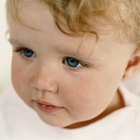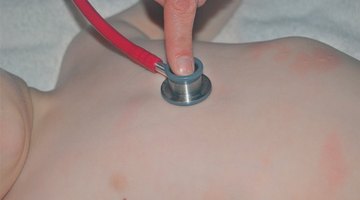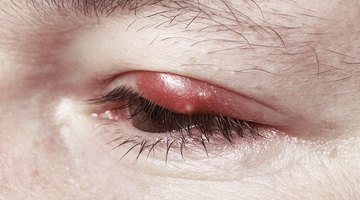Ridges in Fingernails in Babies
Nail ridges are raised lines that typically run vertically across the fingernail or toenail. Although they usually develop in adulthood, they can appear in people of all ages, even babies. They often are not a cause for concern, but they can indicate potentially serious diseases and infections, especially if the ridges appear suddenly or develop in an unusual way, such as horizontally.
Localized Causes
Fingernail and toenail ridges can have localized causes, such as bacterial or fungal infections. These infections could also change the nails' color, texture and shape, according to Better Medicine, and may cause infections underneath the nails or skin. Red streaks underneath the nails, called splinter hemorrhages, can also indicate infections, notes Medline Plus. Trauma in the nail area, such as a finger being slammed in a door, is another possible cause of nail ridges.
Systemic Causes

White Bumps on My Toddler's Nose
Learn More
Other possible causes of fingernail and toenail ridges are systemic. Examples include iron-deficiency anemia, psoriasis and alopecia areata, a condition that causes hair to fall out in rounded patches. Iron-deficiency anemia is most common in babies 9 to 24 months of age, according to Medline Plus, and an iron-deficiency screening is recommended within that age range.
Potentially Serious Symptom
Nail ridges can indicate a serious problem requiring immediate medical evaluation. This is especially true if the ridges run horizontally or are accompanied by discoloration, according to Better Medicine. Arsenic poisoning and toxic ingestion, such as ingestion of chemicals or poisonous plants, can cause fingernail or toenail ridges in babies. They can also indicate malnutrition or difficulty absorbing food nutrients.
Considerations

Symptoms of an Infant Allergic to Antibiotics
Learn More
If fingernail ridges are accompanied by infection or sickness, they should not be ignored, according to Better Medicine. If your baby has nail ridges along with convulsions, trouble breathing, a lack of desire to drink fluids, dehydration from vomiting or diarrhea, or even brief loss of consciousness, you should seek medical care immediately.











